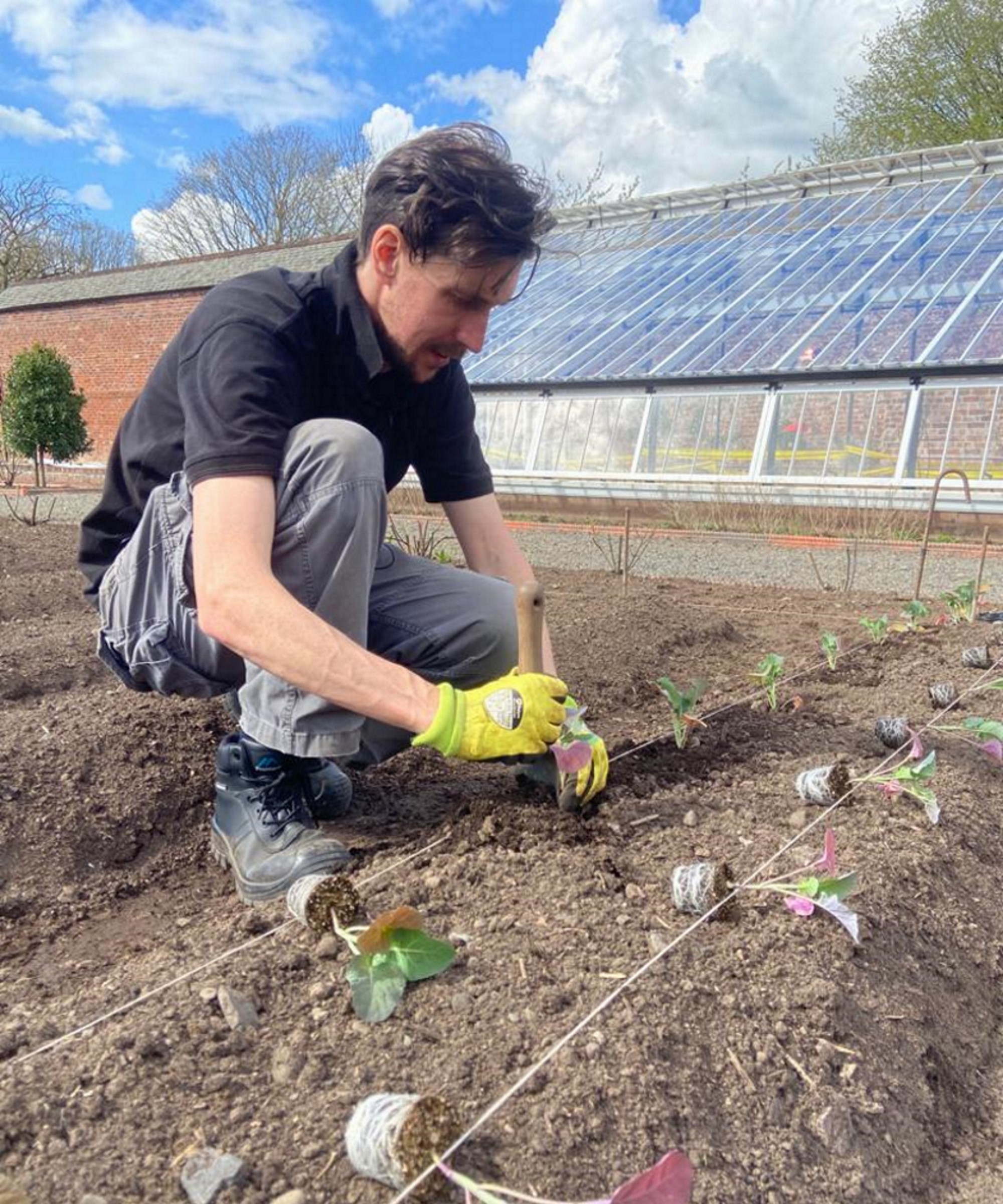Why are my hydrangeas wilting? The answers and the solutions from the experts
Discover the reasons why the beautiful blooms of hydrangeas wilt and what you can do about it


Large flowerheads in an attractive range of colors make hydrangeas a popular shrub, but when these beautiful shrubs wilt, it’s not a welcome picture. Floppy plants reveal that something’s not right and needs rectifying.
These blooming shrubs can suit plenty of flower bed ideas and borders. They are easy to grow and to care for and, if you get in the know about how to grow hydrangeas, it’s not hard to keep them looking their very best.
There are some issues, though, that can mean hydrangeas wilt and we’ve put together all the details on why this can happen and what to do if it does with expertise from gardening pros.
6 reasons for wilting hydrangeas
Hydrangeas are some of the best flowering shrubs you can choose for your backyard and providing you know when to plant hydrangeas as well as understand their care needs, they should thrive. If they wilt? There are generally fixes for the problems that can see them drooping and these are the details.

1. Heavy flowers
Hydrangeas have big blooms – and that’s part of the reason these shrubs are so prized by gardeners. The best hydrangea varieties include both mophead and lacecap types but it’s typically the more generous mophead flowers that can droop after heavy rainfall.
Stems that are bent can recover as the plant dries out, so providing the weather hasn’t been so severe that these have broken, this is a temporary problem and one you don’t need to take action to solve. However, do be sure to prune hydrangeas to keep them in good shape with strong stems. Crucial to this is knowing when to prune hydrangeas, depending on their type.
If you’re planting hydrangeas in the future, it’s worth positioning them somewhere with good protection from the wind providing that location meets their other needs.
2. Bacterial wilt
While drooping hydrangeas can often be rescued, there is a hydrangea disease that brings wilted flowers and leaves that can’t be treated and that’s bacterial wilt. It can spread rapidly, and result in the death of the plant. If your hydrangea does have this problem, it should be removed and destroyed.
But while it’s not an issue you can solve once it’s happened, you can take measures to help prevent bacterial wilt. Be sure to always use clean and sharp pruning shears for hydrangeas and sanitize tools to prevent the transfer of bacteria.
3. Lack of water
Wilting hydrangeas can be a sign that the plant needs water. ‘Underwatering can have detrimental effects on hydrangeas,’ says Susan Brandt, co-founder of Blooming Secrets. ‘Not watering these plants enough can stress them out. The plant will take the energy it needs and use it to focus on its roots, which takes its attention away from the flowers and leaves.’
The solution is to get the regime for watering hydrangeas right. ‘To determine how much water hydrangeas need, several factors come into play,’ says Susan. ‘One important consideration is the specific variety of hydrangea being grown as different varieties have varying water requirements. Another consideration is the climate and weather conditions as these factors can play a crucial role in determining hydration needs. Since hydrangeas have large leaves, they can dry out quickly when it gets warmer out. Hotter and drier climates will require more frequent watering compared to cooler and more humid environments.
‘Observing the soil moisture is a way to judge watering requirements,’ she continues. ‘Hydrangeas prefer moist but well-drained soil. One way to check if they need watering is by sticking your finger about an inch deep into the soil – if it feels dry at this depth, it’s time to water. Another indicator is leaf appearance. If leaves appear droopy or limp, it can indicate that the plant requires hydration. It is important not to overwater your plants as this can also harm hydrangeas by causing root rot or fungal diseases. When watering the plant make sure you water at the base of the plant and not the leaves.’
4. Over fertilizing
A surfeit of fertilizer could be the cause of a wilting hydrangea. ‘Too much fertilizer causes more harm than good and can lead to problems for plants,’ says H&G’s gardening expert Drew Swainston. ‘Adding too much feed can cause a rush of growth that is weak and the stem cannot support the weight, so the plant droops.
‘The other potential reason is that too much fertilizer can actually burn the plant’s roots and inhibit its potential to take in water and nutrients, and the result can be the plant wilting from a lack of moisture.’
The remedy for this problem? Learn how and when to fertilize hydrangeas and you can put a stop to wilting and help them thrive.

Drew qualified as a journalist before studying for a horticulture qualification, after which he worked as a professional gardener for several years, specializing in kitchen gardening. He’s now bringing his expertise and passion to Homes & Gardens as a member of our team.
5. Too much sun
Drooping can be the result of too much sun. ‘To ensure that hydrangeas thrive and avoid wilting, it is important to understand their sunlight requirements,’ explains Susan Brandt. ‘Hydrangeas need a balance of sun and shade to stay healthy and vibrant. While hydrangeas appreciate some direct sunlight, they are primarily shade-loving plants. It is best if they are exposed to morning sun or filtered sunlight for a few hours a day. This helps promote healthy growth and abundant blooms.
‘In very hot climates or during the peak of summer, it is advisable to provide them with partial shade during the hottest part of the day,’ says Susan.
6. Transplant shock
If you’ve recently moved a hydrangea to a new location in the garden – for example because it was getting too much sun (see above) – you might see the signs of transplant shock.
‘A hydrangea could suffer from transplant shock and will show this unhappiness in the form of wilting leaves,’ says H&G’s Drew Swainston. ‘You want to try to take the root ball and lots of the surrounding soil with it to try to alleviate the risk of transplant shock. However, it is still common for plants, including hydrangeas, to look sad and droop after being moved. This is especially true if the plant is moved in hot weather.’
Don’t despair if this is why your hydrangea is wilting, however. ‘It will take them time to get accustomed to their new surroundings so water them well, keep a close eye, and they should perk up,’ says Drew.
Get in the know about when you can transplant hydrangeas, too, to make the move successful.
What does an overwatered hydrangea look like?
A hydrangea that’s been overwatered may look like one that’s suffering from a lack of water with wilted leaves. However, if it’s overwatered the leaves yellow and drop. Poor, fewer or no blooms can also result. If the overwatering causes root rot, this can kill the plant. If you suspect this is the problem, you can dig gently by the roots. If you see the roots are brown and slimy, this will confirm the issue.
Hydrangeas are typically straightforward to care for and a wilting hydrangea is often fixable. Since dry conditions can cause drooping, opt for the most drought-tolerant hydrangeas if your is a dry garden. And for plants that thrive from year to year, get savvy about how to winterize hydrangeas.
Sign up to the Homes & Gardens newsletter
Design expertise in your inbox – from inspiring decorating ideas and beautiful celebrity homes to practical gardening advice and shopping round-ups.

Sarah is a freelance journalist and editor. Previously executive editor of Ideal Home, she’s specialized in interiors, property and gardens for over 20 years, and covers interior design, house design, gardens, and cleaning and organizing a home for Homes & Gardens. She’s written for websites, including Houzz, Channel 4’s flagship website, 4Homes, and Future’s T3; national newspapers, including The Guardian; and magazines including Future’s Country Homes & Interiors, Homebuilding & Renovating, Period Living, and Style at Home, as well as House Beautiful, Good Homes, Grand Designs, Homes & Antiques, LandLove and The English Home among others. It’s no big surprise that she likes to put what she writes about into practice, and is a serial house renovator.
-
 Where can you buy Benjamin Moore paint? Here's all you need to know about browsing and shopping this much-loved brand
Where can you buy Benjamin Moore paint? Here's all you need to know about browsing and shopping this much-loved brandLooking to buy Benjamin Moore paint? These are the best ways to get your hands on this iconic paint brand
By Emily Moorman
-
 I tried the Pomodoro Technique to blast through my spring cleaning to-do list – now I'll always rely on it to banish procrastination
I tried the Pomodoro Technique to blast through my spring cleaning to-do list – now I'll always rely on it to banish procrastination25 minutes is more than enough to make a real difference
By Ottilie Blackhall